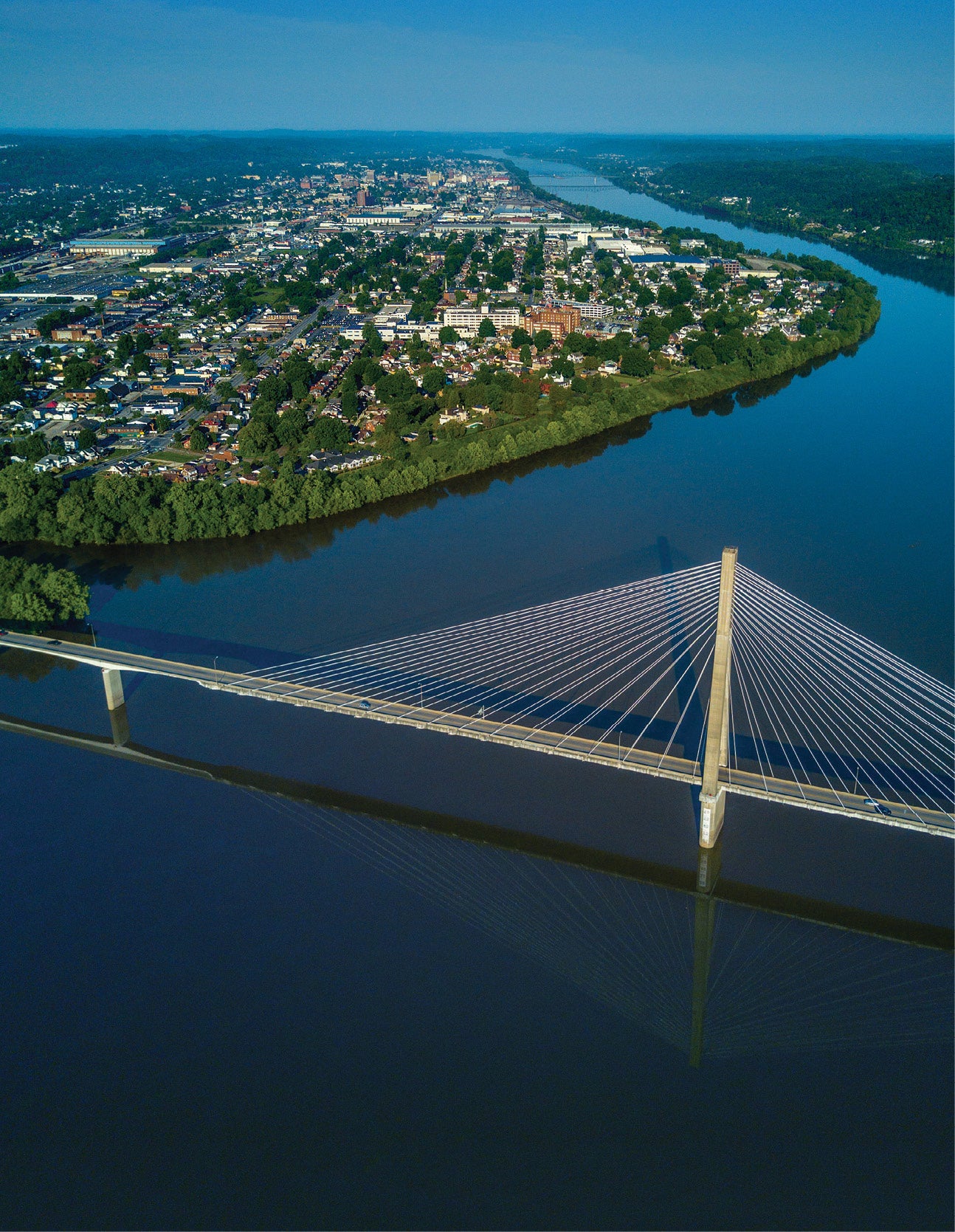 How the university’s partnership with Huntington benefits the entire region
How the university’s partnership with Huntington benefits the entire region
When Huntington, West Virginia, was named America’s Best Community in April, it came as no surprise to many members of the Marshall community. Without the university’s support and influence, said Huntington Mayor Steve Williams, the city’s revitalization would be out of reach.
“When you combine two metals, and you bring the properties of the two together and create an alloy, the combined product is much stronger than the two alone,” Williams said. “That’s what we have here in Huntington with Marshall University. Marshall is the heartbeat of Huntington. As goes Marshall, so goes the city.”
The America’s Best Communities competition, sponsored by Frontier Communications, DISH Network, CoBank and The Weather Channel, was a three-year campaign that challenged small towns and cities throughout the country to develop innovative ideas for economic revitalization. The 352 participating communities were required to create revitalization plans, which were judged by a panel of economists, business leaders and philanthropists. Winning communities were awarded various sums of money to go toward their plans.
As the first-place community, Huntington received $3 million, in addition to $100,000 in seed money as a semifinalist and $50,000 as a quarterfinalist, to go toward the Huntington Innovation Project (HIP) plan. Williams notes that the HIP plan came together thanks to the support, guidance and vision of the late President Stephen Kopp.
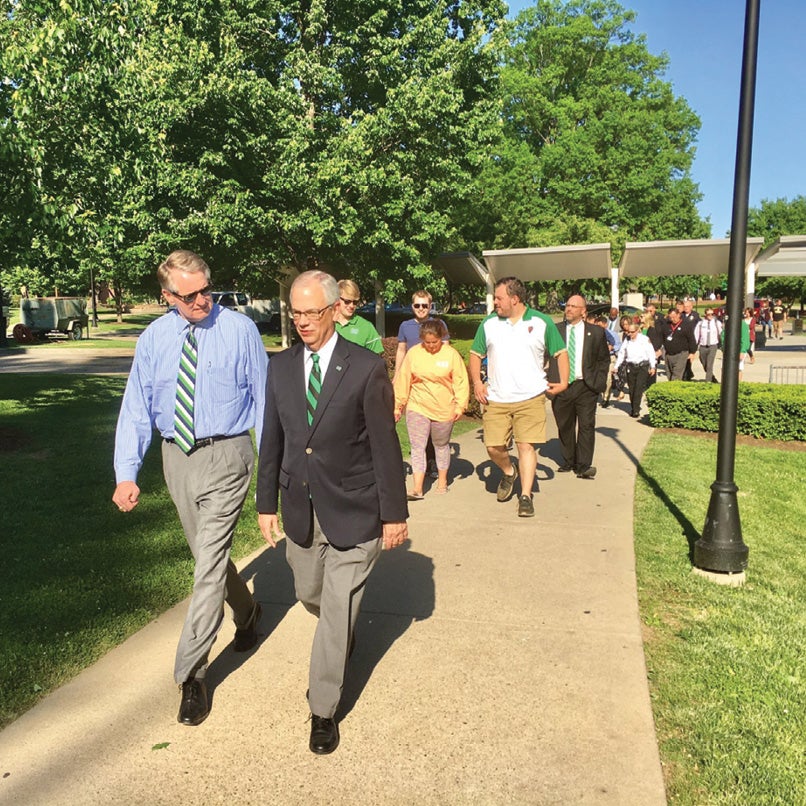 “Then President Jerome Gilbert arrived as the right person at the right time to bring the plan to fruition,” Williams explained. “Jerry Gilbert, in addition to being absolutely brilliant, has a servant’s heart. Anytime we bring together a collaborative group, whether it’s to address the opiate epidemic in our region or the transformation of our neighborhoods, whether it’s to create jobs or improve downtown, Jerry makes sure that Marshall University has a seat at the table. Not only that, but most of the time he’s the one actually sitting at the table.”
“Then President Jerome Gilbert arrived as the right person at the right time to bring the plan to fruition,” Williams explained. “Jerry Gilbert, in addition to being absolutely brilliant, has a servant’s heart. Anytime we bring together a collaborative group, whether it’s to address the opiate epidemic in our region or the transformation of our neighborhoods, whether it’s to create jobs or improve downtown, Jerry makes sure that Marshall University has a seat at the table. Not only that, but most of the time he’s the one actually sitting at the table.”
Margaret Mary Layne, former city manager and member of the America’s Best Communities leadership team, said the university’s expertise, resources and enthusiasm have furthered the success of each of the four HIP plan components: the Highlawn Brownfields Innovation Zone, which will redevelop vacant industrial buildings along the Ohio River and bring a polymer technology center to Huntington; the Fairfield Innovation Corridor, which will redesign and redevelop areas along Hal Greer Blvd. and create arts and wellness districts in surrounding neighborhoods, including those near the Marshall University Medical Center; the West End River-to-Rail Revitalization, which will bring improvements to Central City and the West End; and Gigabit City, which will connect all of Huntington with high-speed broadband.
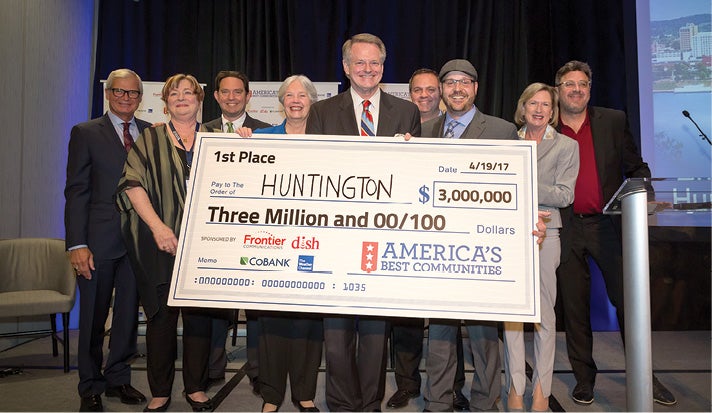 “The way that Marshall has embraced this city and supported so many different projects throughout our region has brought a level of success that we never would have reached otherwise,” Layne said. “From the administration to the department heads to the brilliant faculty, staff and students, there’s a rich history at Marshall of being engaged in the Huntington community.”
“The way that Marshall has embraced this city and supported so many different projects throughout our region has brought a level of success that we never would have reached otherwise,” Layne said. “From the administration to the department heads to the brilliant faculty, staff and students, there’s a rich history at Marshall of being engaged in the Huntington community.”
Williams said the America’s Best Communities competition and the revitalization projects that are underway are only part of the collaborative spirit between Marshall and Huntington. From an entire city that buzzes with excitement on game day to the Marshall Artists Series, which brings together the community and university in celebration of the arts, sometimes it’s hard to tell where Marshall ends and Huntington begins.
“Marshall adds a zest and energy to our life here in Huntington that I don’t think many of us fully realize,” Williams said. “Just look at Third Avenue and how dynamic it is, with the Visual Arts Center across from Pullman Square and the Department of Dietetics at Huntington’s Kitchen. People who haven’t visited Huntington in years are astounded at how vibrant and eclectic that area of town is. Marshall’s presence is like having a power plant in the heart of downtown, and our job is to figure out how we can plug into that and channel its energy.”
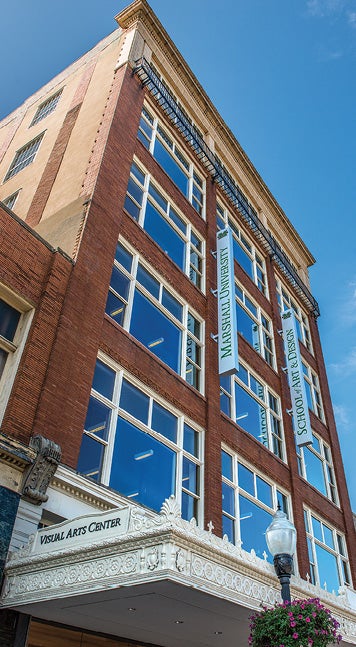 He said the international footprint of the Robert C. Byrd Institute is a prime example of how the university and city can channel that energy by bringing together higher education and economic development. Newer programs like the renowned Marshall University Forensic Science Center and the innovative addiction sciences programs at the School of Medicine and School of Pharmacy have the power to transform not only Huntington, he said, but also the region, nation and world.
He said the international footprint of the Robert C. Byrd Institute is a prime example of how the university and city can channel that energy by bringing together higher education and economic development. Newer programs like the renowned Marshall University Forensic Science Center and the innovative addiction sciences programs at the School of Medicine and School of Pharmacy have the power to transform not only Huntington, he said, but also the region, nation and world.
And it’s only possible through partnership, said Gilbert.
“Marshall is a university that wants to be active in the community, that wants to be thought of as a partner, that is concerned about not only its students but also the community in which it’s placed,” Gilbert said. “In Huntington and with Mayor Williams, I see a real embracing of the university as a vital part of the city, and our goal is to be an equal partner in that. Universities should not be islands to themselves.”
Since arriving at Marshall in 2016, Gilbert has made the Fairfield community — which extends from 26th Street to 10th Street, south of the railroad tracks — a priority, getting to know residents, helping at-risk youth prepare for college and leading community service projects in the neighborhoods closest to the university. With Marshall’s participation in the latest revitalization efforts, he said, the university’s reach will extend even further.
“I want Marshall University to create jobs in Huntington, to be involved in solving the region’s addiction crisis and to help our community in many different ways as it gains strength and moves forward,” he said. “Huntington is poised for a period of rebirth and revitalization, and we’re excited to be a part of it.”
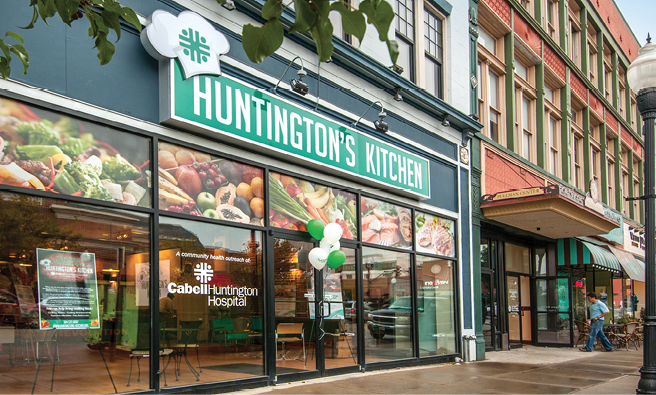
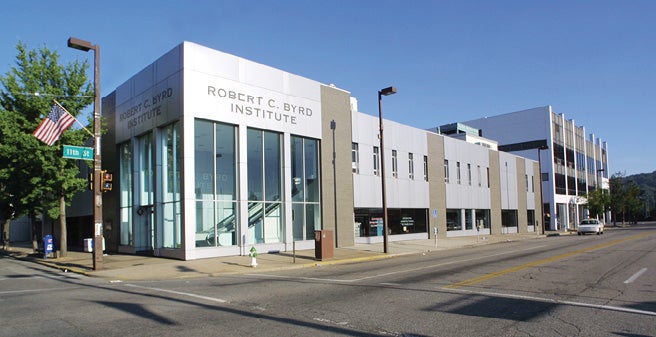
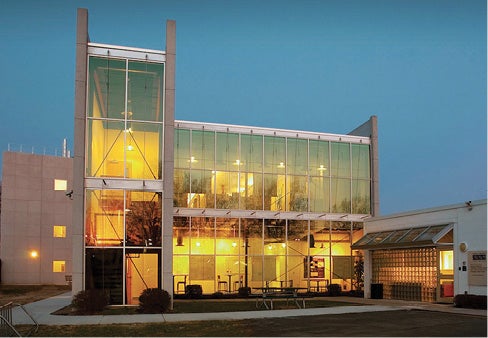
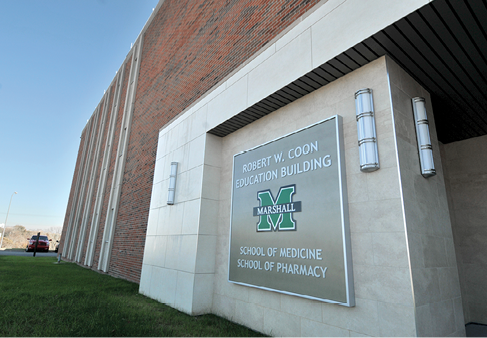
Katherine Pyles is a freelance writer living in Huntington, West Virginia.
Photos: (Second from top) Huntington Mayor Steve Williams and President Gilbert walk through Marshall’s Huntington campus as they discuss student safety at the university and in the community. (Third from top) Huntington was awarded the national title of America’s Best Community, winning $3 million to implement its Huntington Innovation Project, a series of economic revitalization plans. (Fourth from top) Marshall’s presence is felt downtown with its beautiful and innovative Visual Arts Center across from Pullman Square. (Below, left to right) Huntington’s Kitchen is a partnership between Cabell Huntington Hospital and Marshall University Department of Dietetics with a shared mission of promoting healthy eating, education and quality of life for Huntington residents. Robert. C. Byrd Institute for Advanced Flexible Manufacturing (RCBI) at Marshall University offers resources to support economic development. Using its expertise in manufacturing and technology, RCBI enables manufacturers to move their ideas and creative solutions from concept to market. The research being performed at the Marshall University Forensic Science Center (left) and the addiction sciences programs at the School of Medicine and School of Pharmacy (right) have the power to transform Huntington — and even the world.
 How the university’s partnership with Huntington benefits the entire region
How the university’s partnership with Huntington benefits the entire region